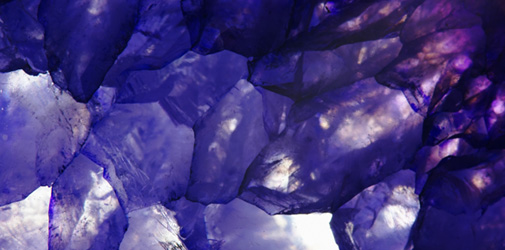
Gemstone Features
There is currently no international industry standard for grading gemstones, but four of their common attributes are typically taken into account when evaluating their quality and value: color, carat weight, cut and clarity.
Color
The quality of a gemstone's color is determined by the color's richness (tone), its shade (hue) and its saturation (intensity). Generally, the most prized stones have a deep, rich color that's evenly spread through the stone. The tone of a gemstone's color can be so light that it's almost colorless, or so dark it's practically opaque. Generally, the stone's color should be dark enough to appear intense, but contain enough transparency so that light shines through it, illuminating its rich brilliance. The hue of a gemstone refers to its shade, and the highest quality stones feature a single color that's evenly balanced throughout the stone. Multi-colored gemstones are usually considered of lower value than gemstones of a uniform color. The purity of a gemstone's color determines its degree of saturation. Stones with optimal saturation exhibit bright, clear colors, while stones of lower saturation grades appear cloudier.
Cut
Just like diamonds, the quality with which a gemstone is cut will greatly affect its brilliance and value. However, there are no industry-standard cut formulas to follow. Gemstone cuts are usually customised according to each stone's symmetrical elements, color, carat weight and clarity, and must be individually evaluated. For example: Corundum gemstones, such as sapphires and rubies are so highly valued that a stone cutter may choose to preserve as much of the stone's carat weight as possible, even if that means keeping a blemish or inclusion that the cutter would otherwise remove. Darker colored stones are usually cut fairly shallow to enhance their brightness, while lighter colored gemstones may look better with a deeper pavilion. No matter the type, all gemstones should be cut with symmetrical facets to maximise their light performance.
Clarity
Like diamonds, almost all gemstones are born with some inclusions, which may be mineral spots, cracks, or tiny crevices. But, unlike diamonds, gemstone inclusions don't always reduce their value. While, generally speaking, the fewer inclusions the higher the worth of the stone, different types of gemstones typically attract varying degrees of inclusions, and they are usually judged against their type rather than following an overall clarity standard. Many people are surprised to hear that some categories of gemstones are so rare, and so rarely found clear, that gemstones of such a type with very few or no inclusions are considered more expensive and valuable than diamonds with comparable characteristics.
The Mohs Scale
The Mohs scale assesses a material's hardness according to its scratch resistance. While this concept has been in use since as early as 300 BC, it was the German mineralogist Friedich Mohs who standardised the scaling system in 1812. According to the scale, ten types of minerals are ordered according to their degrees of hardness, with diamonds achieving the highest hardness rating at number 10. New materials that are being judged are scratched against other hard materials on the scale to find their relative level of hardness.













